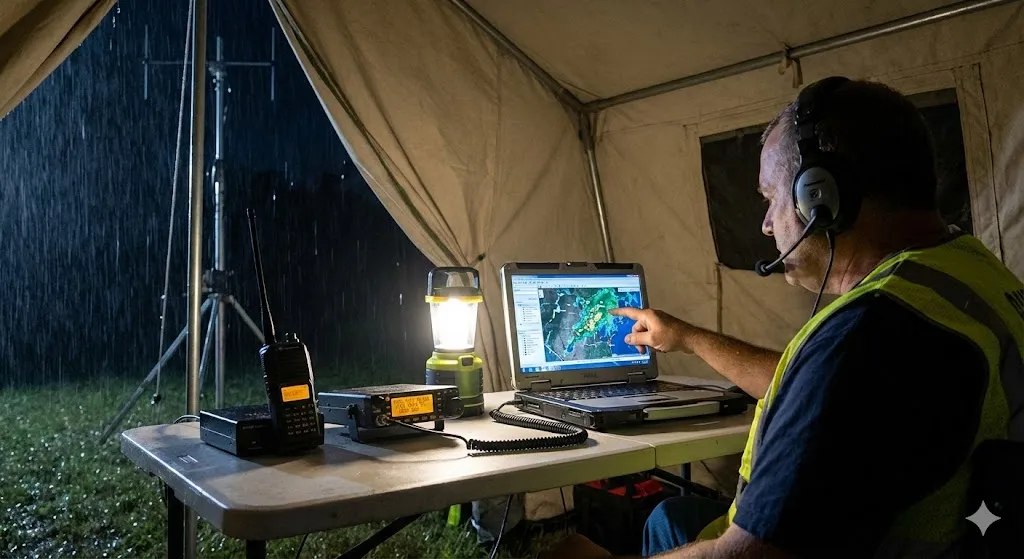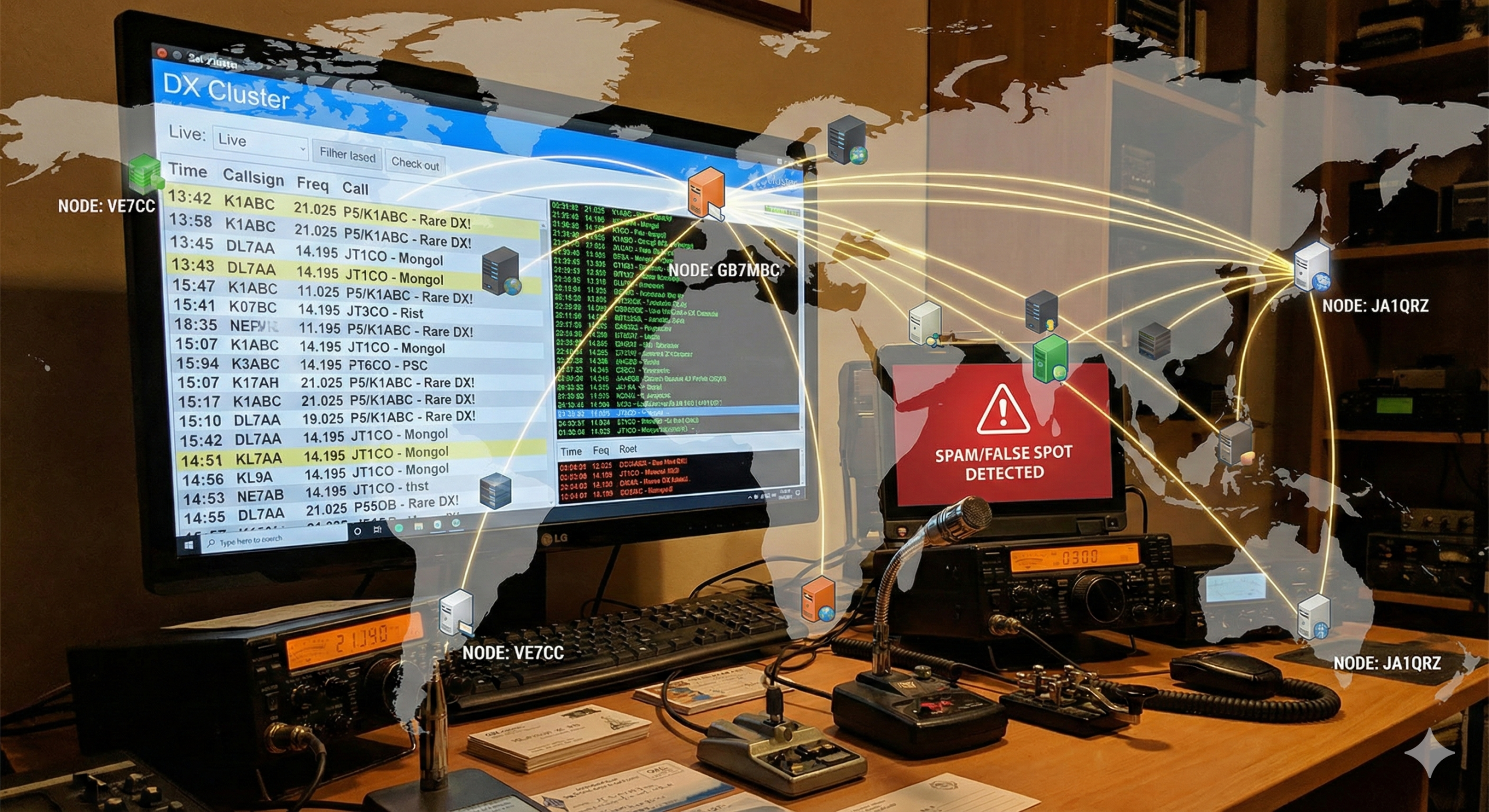Yaesu FT857 All Band All Mode DSP Transceiver
The Yaesu FT-857D is a multimode amateur transceiver that transmits and
receives communications on bands ranging from high frequency (HF) to
very high frequency (VHF) to ultra high frequency (UHF). It has inputs
for an HF/6M antenna and a 2M/440 MHz antenna, as well as a removable
front panel. It is even remotable with a separately sold kit.
General Specifications
-
The Yaesu 857D weighs 4.6 lb and
measures 6.1 inches by 2 inches by 9.2 inches. It operates in
temperatures ranging from 14 degrees to 140 degrees Fahrenheit. It runs
on 13.8 volts of negative ground direct current power, plus or minus 10
percent. Its frequency stability is plus or minus 4 parts per million
(ppm) between temperatures of 14 and 122 degrees Fahrenheit. Its
emission modes are as follows: A1 (continuous wave), A3 (amplitude
modulation, or AM), A3J (lower and upper sidebands), F1 (9,600 bps
packet), F2 (1,200 bps packet) and F3 (frequency modulation, or FM). Its
minimum synthesizer steps are 10 Hz (continuous wave/single-sideband
modulation) and 100 Hz (AM, FM and wideband FM).
Reception
-
The Yaesu 857D receives
transmissions over frequencies that range from 0.1 to 56, 76 to 108, 118
to 164 and 420 to 470 MHz. When receiving, it consumes between 0.55 and
1 ampere (A). Its sensitivity on the SSB/CW modulation (considering 10
dB signal-to-noise ratio) ranges from -uV to 0.125 uV. On AM, it ranges
from 32 uV to 1 uV. Considering a 12 dB signal-to-noise and distortion
ratio for FM, the sensitivity ranges from 0.5 uV to 0.2 uV. Its first
intermediate frequency is 68.33 MHz on SSB, CW, AM and FM, and 10.7 MHz
on wideband FM. Its second intermediate frequency is 455 kHz. Its audio
output is 2.5 watts into 4 ohms at 10 total harmonic distortion, with
impedance that ranges from 4 ohms to 16 ohms.
Transmission
-
The 857D transmits over
frequencies that include the range between 160 and 6 meters, 2 meters,
70 centimeters (only for amateur bands) and the Alaska emergency
frequency at 5,167.5 kHz. It consumes about 22 A during transmission.
Its power output is 100 watts when transmitting between 160 and 6
meters, 50 watts at 2 meters and 20 watts at 70 centimeters. It has
balanced modulation over SSB, variable reactance over FM and early stage
modulation over AM. Its maximum deviation on FM is 5 kHz. Its SSB
frequency response ranges from 400 Hz to 2,600 Hz. Its microphone
impedance ranges from 200 ohms to 10,000 ohms, with the supplied
microphone offering an impedance of 2,000 ohms.
FT-857D Specifications
|
GENERAL
|
|
|
Frequency Range: Receive:
|
0.1-56, 76-108, 118-164 and 420-470 MHz |
|
Transmit:
|
160 – 6 Meters including 60 Meters |
|
0
|
2 Meters |
|
0
|
70 Centimeters (Amateur bands only) |
|
0
|
5167.5 kHz: Alaska Emergency Frequency |
|
0
|
(U.S.A. version only) |
|
Emission Modes:
|
A1 (CW), A3 (AM), A3J (LSB/USB), |
|
0
|
F1 (9600 bps Packet), F2 (1200 bps Packet), F3 (FM) |
|
Synthesizer Steps (Min.):
|
10 Hz (CW/SSB), 100 Hz (AM), |
|
0
|
100 Hz (FM), 100 Hz (WFM) |
|
Antenna Impedance:
|
50 Ohm, Unbalanced |
|
Operating Temp. Range:
|
-10 °C to +60 °C (14 F to 140 F) |
|
Frequency Stability:
|
Better than ±4 ppm (-10 °C to +50 °C) |
|
0
|
|
|
Power Requirements:
|
DC 13.8V ±10 %, Negative Ground |
|
Current Consumption:
|
Receive (Squelched): 0.55A, |
|
0
|
Receive (Max. Audio): 1A |
|
0
|
Transmit: 22A (@ 100W RF output) |
|
Case Size:
|
6.1″ (W) x 2.0″ (H) x 9.2″ (D) (155 x 52 x 233 mm) |
|
Weight:
|
4.6 lb. (2.1 kg.) |
|
0
|
|
|
TRANSMITTER
|
|
|
Power Output:
|
160 – 6m: 100 Watts (25 Watts AM carrier) |
|
0
|
2m: 50 Watts (12.5 Watts AM carrier) |
|
0
|
70cm: 20 Watts (5 Watts AM carrier) |
|
Modulation Types: SSB:
|
Balanced Modulator |
|
FM:
|
Variable Reactance |
|
AM:
|
Early Stage (Low Level) |
|
FM Maximum Deviation:
|
±5 kHz (±2.5 kHz on FM-N) |
|
Spurious Radiation: Harmonics:
|
At least 50 dB down (1.8 – 29.7 MHz) |
|
At least 60 dB down (50/144/430 MHz)
|
0 |
|
Non-harmonic:
|
At least 50 dB down (1.8 – 29.7 MHz) |
|
0
|
At least 60 dB down (50/144/430 MHz) |
|
Carrier Suppression:
|
At least 40 dB |
|
Opp. Sideband Suppression:
|
At least 50 dB |
|
SSB Frequency Response:
|
400 Hz – 2600 Hz (-6 dB) |
|
Microphone Impedance:
|
200 – 10 k Ohm (Supplied microphone: 2 k Ohm) |
| RECEIVER | |||
|
Sensitivity:
|
SSB/CW | AM-N | FM |
|
100 kHz – 1.8 MHz (IPO off):
|
– uV | 32 uV | – |
|
1.8 – 28 MHz:
|
0.25 uV | 2 uV | – |
|
28 – 30 MHz:
|
0.2 uV | 2 uV | 0.50 uV |
|
50 – 54 MHz:
|
0.125 uV | 1 uV | 0.2 uV |
|
144/430 MHz:
|
0.125 uV | – | 0.2 uV |
| SSB/CW/AM-N figures are for 10 dB S/N, 12 dB SINAD on FM | |||
| Squelch Sensitivity: | SSB/CW/AM | FM |
| 1.8 – 28 MHz: | 2.5 uV | – |
| 28 – 30 MHz: | 2.5 uV | 0.32 uV |
| 50 – 54 MHz: | 1 uV | 0.16 uV |
| 144/430 MHz: | 0.5 uV | 0.16 uV |
| Intermediate Frequencies: | 0 |
| 1st IF: | 68.33 MHz (SSB/CW/FM/AM) |
| 0 | 10.7 MHz (W-FM) |
| 2nd IF: | 455 kHz |
| Image Rejection: | Better than 70 dB (1.8 – 30 MHz, 50 – 54 MHz) |
| 00 | Better than 60 dB (144 – 148 MHz, 430 – 450 MHz) |
| IF Rejection: | Better than 60 dB |
| Selectivity (-6 / -60 dB): | 0 |
| SSB/CW: | 2.2 kHz/4.5 kHz |
| CW: | 500 Hz/2.0 kHz (Optional YF-122C installed) |
| CW-N : | 300 Hz/1.0 kHz (OptionalYF-122CN installed) |
| AM: | 6 kHz/20 kHz |
| FM: | 15 kHz /30 kHz (-6 / -50 dB) |
| Audio Output: | 2.5 W into 4 Ohm @ 10% THD |
| Audio Output Impedance: | 4 Ohm – 16 Ohm |
| 0 | |
| Specifications are subject to change without notice, and are guaranteed within amateur bands only. | |






Post Comment